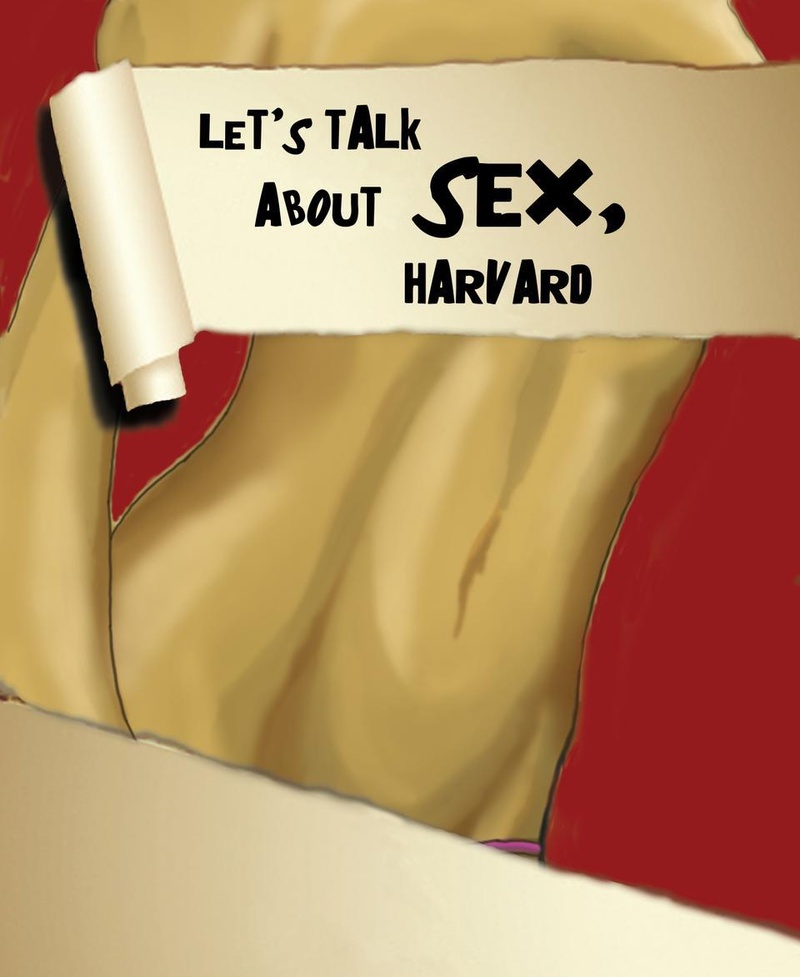If you want to read Harvard’s copy of Poul Gerhard’s “Pornography or Art,” you’ll have to ask permission. The Fine Arts Library limits access to this book, among others, to the “Cage”—which is, thankfully, not nearly as intimidating as it sounds. Should you ask, you’ll be escorted to the back of the library into a series of offices that most patrons never see. Fill out the appropriate form, and you’ll be seated at a long conference table to read. As you flip the pages, the avuncular man in the corner office will chat about what he’ll have for lunch.
In “Pornography or Art,” the precise Art Nouveau illustrations of Oscar Wilde compatriot Aubrey Beardsley are juxtaposed with rough-etched instructional diagrams from Japanese bridal books from the Middle Ages. The text that accompanies these images, in its unwaveringly academic tone, makes the artwork all the more shockingly graphic. It’s clearly not intended to titillate the reader, but one can see how it might nonetheless.
The book is part of a growing collection of explicit material housed by the Harvard College Library (HCL). Encouraged by Harvard’s tendency to avoid academic and scholastic censorship, a surprising range of erotic art has appeared on campus in libraries, classes and student publications. Some of this art implements explicit content to achieve a higher social or artistic purpose, and some encourages us to enjoy the explicit for its own sake.
DON’T JUDGE A BOOK BY ITS COVER
Dan C. Hazen jokes that he’s worked for HCL forever—more precisely, twenty years. For the last six, he has served as Associate Librarian for Collection Development.
Harvard’s libraries maintain no special collections devoted exclusively to sex and sexuality. But, according to Hazen, “Explicit stuff? We’ve got a lot of it.” Search on HOLLIS for “Erotica” or “Pornography,” and you might be surprised by the results.
“We’ll have a representative sampling of that kind of material as we would of regular women’s magazines, sports publications—any realm of popular mass activity,” he said. However, he added, “[we’re not] dirty old men pushing pornography on innocent students.”
Responsibility for collection development is distributed among HCL’s bibliographers, each of whom is assigned to suggest new collection items from a specific part of the world. Hazen said, “[We take] pride in being able to ferret out both the mainstream and the fringes, presenting a full spectrum of what’s being said and thought and argued.” There are no particular rules by which bibliographers must abide, provided the material is legal. For proposed collection additions, price is more often an issue than objectionable content.
About fifteen years ago, a professor offered to donate a complete run of Penthouse Magazine to Widener Library. (Which professor? “I probably shouldn’t say,” Hazen laughed.) The collection was to be stored behind the desk in the Periodicals Room, requiring patron request for use. This ultimately didn’t work out, but only because, as Hazen put it, “The older women on staff were extraordinarily uncomfortable with the notion they’d have to be handing that stuff over.”
As scholarly interests have shifted toward legitimizing the study of sexuality and pornography, explicit literature has grown increasingly accepted in research library collections. In fact, Hazen said, the difficult question is more frequently where to store material, not whether to accept it in the first place. Pornography is typically housed in closed circulation areas—not for moral concerns, but because, in Hazen’s experience, “it disappears almost as fast as you put it on the shelf.” When the books and magazines themselves aren’t stolen, explicit images are often razor-bladed out of them. But even restricted material is no more difficult to obtain than items stored in the Harvard Depository. Otherwise, it is simply contained within a controlled reading space—the Fine Arts Library Cage, for example.
Harvard takes a similarly laissez-faire stance regarding the content of students’ work. Julia A. Rooney ’11, a Visual and Environmental Studies (VES) concentrator, paints—and paints whatever she wants. “Most professors are completely, completely open to whatever you have to throw at them,” she said. “They’re artists themselves. Everything is fair game.”
Rooney has taken classes with people pursuing independent projects involving everything from nude photography to polemic political content. “I think it’s more about how the thing is dealt with than what exactly it is,” she said.
VAGINAS OF HARVARD
“Vaginas of the Harvard Community,” credited to Colette S. Perold ’11, is a collage of sixteen black-and-white photographs, laid out in a four-by-four grid. Half of the images depict vaginas and half other objects—a head of lettuce, an elongated flame—but even these, in context, take on a distinctly labial character. Now imagine this piece juxtaposed with “Expanding Consent,” a thoughtful, 8000-word interview with feminist activist Jaclyn Friedman, also by Perold. The two were sandwiched together in the same issue of H BOMB Magazine, a student publication explicitly focused on sexuality. Together the pieces seem sexy but smart, smart but sexy—just how H BOMB presents itself.
To co-editor-in-chief Christian L. Garland ’10, the magazine is anything but pornography, as some have labeled it. H BOMB takes itself very seriously, and we want students to as well,” he said. “I was really drawn to [H BOMB] because sex is something that is often not talked about in a thoughtful manner, at least at Harvard. I wanted to be part of that conversation.”
Read more in Arts
Museum Houses A Bizarre Bazaar of Animals













